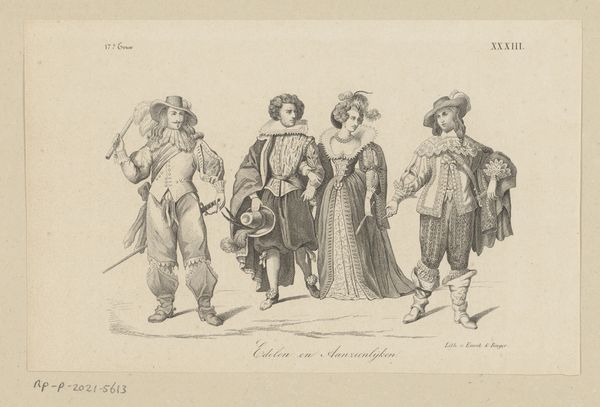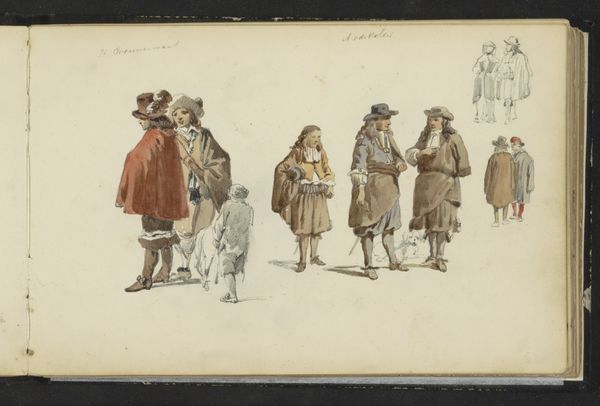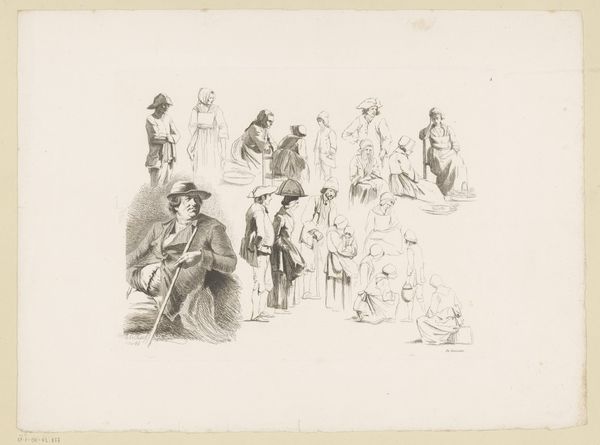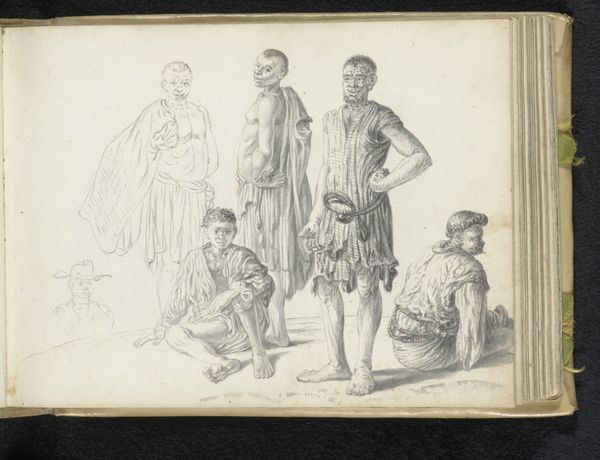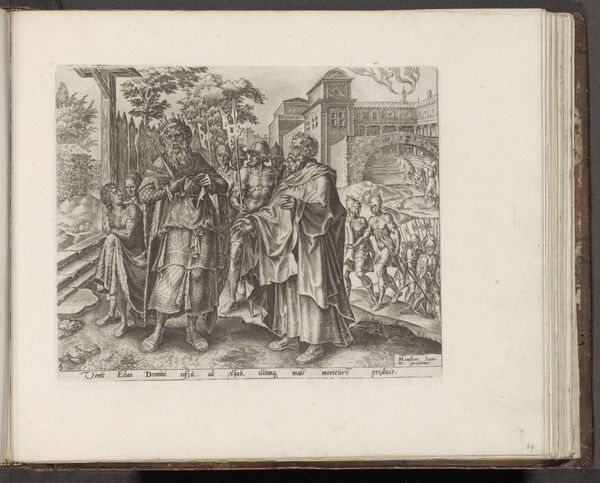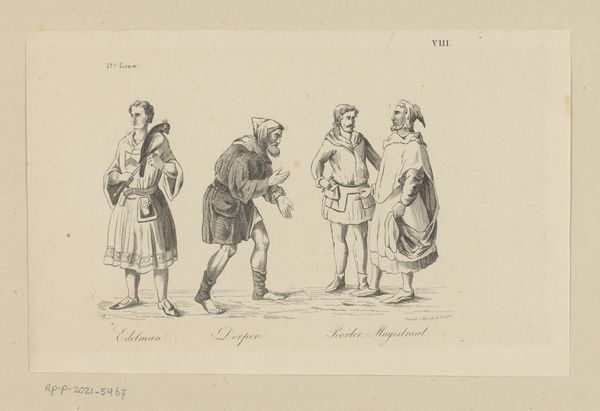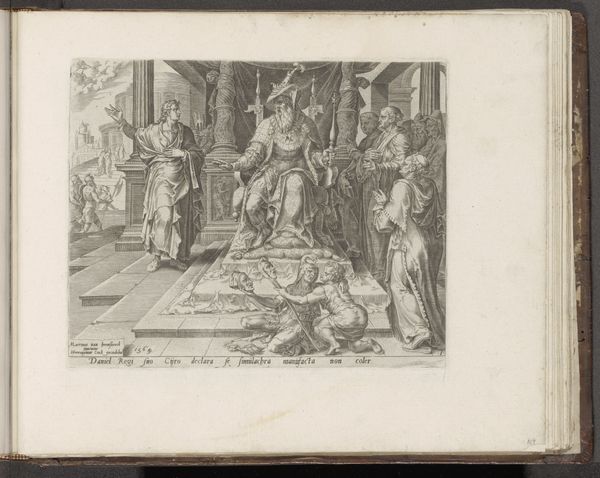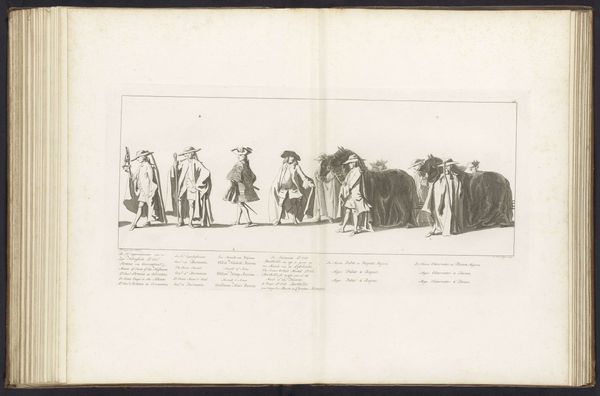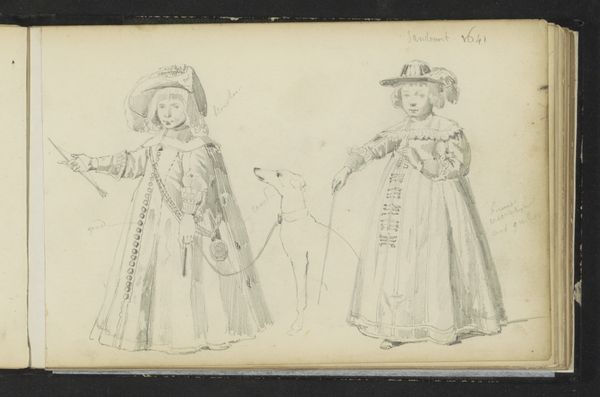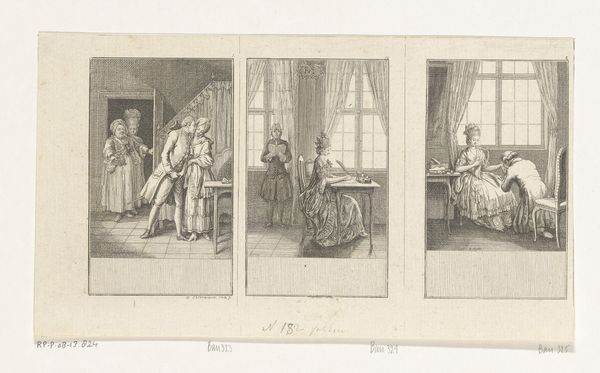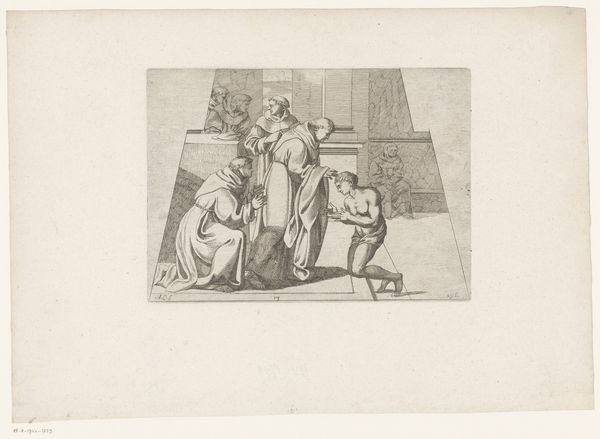
drawing, paper, pencil
#
portrait
#
drawing
#
aged paper
#
toned paper
#
quirky sketch
#
dutch-golden-age
#
sketch book
#
incomplete sketchy
#
figuration
#
paper
#
personal sketchbook
#
sketchwork
#
sketch
#
pencil
#
sketchbook drawing
#
genre-painting
#
storyboard and sketchbook work
#
sketchbook art
#
realism
Copyright: Rijks Museum: Open Domain
Curator: Here we have Cornelis Springer's "Figuren in zeventiende-eeuwse kleding," or "Figures in Seventeenth-Century Clothing," possibly created in 1882. It’s a pencil drawing on paper currently held in the Rijksmuseum collection. Editor: What immediately strikes me is the sketchy quality – the lines are so light, almost hesitant. There's a sense of fleeting observation, like a quickly captured memory. Curator: Absolutely. Note how Springer employs simple strokes to suggest form and texture. The figures, rendered with varying degrees of detail, occupy a shallow space, defined solely by the toned paper. Observe the contrast between the roughly sketched backdrop and the more defined rendering of specific garments and figures, especially the elaborate dress on the right. Editor: And that clothing is fascinating! Look at the clear historical references. These garments are evocative of specific social classes and periods. The artist seems interested in preserving or perhaps even romanticizing a specific cultural memory through the accurate portrayal of historical clothing. Are these direct copies, do you think? Curator: It's likely Springer drew inspiration from historical paintings and prints, and maybe from costumed models too, but the execution, so fluid and incomplete, hints at his personal interpretation. I would consider this particular sketch a preparation exercise. Editor: Still, consider the visual cues Springer gives us – the hats, the cuffs, the long coats – they function as symbols, quickly placing the viewer in a specific time and place, perhaps the Dutch Golden Age. There’s almost a deliberate "staging" of the past, like a tableau vivant intended to evoke certain emotional responses. What feelings does that generate for you? Nostalgia? Loss? Curator: Primarily, I’m intrigued by the balance achieved between precise detail and the inherent incompleteness of the sketch. The lack of precise delineation actually strengthens the composition. By emphasizing form and overall structure, rather than labored detail, Springer invites us to participate, to co-create the scene. Editor: I appreciate your insight into its structure and process. But the fact it’s not overworked perhaps speaks to its accessibility; we all recognize the figures, not just as sketches of possible Golden Age dress but echoes of the values embedded within them. Curator: Precisely. A masterful demonstration of artistic intent through carefully calibrated execution. Editor: Agreed. It makes one contemplate how something so ephemeral on the surface can carry such profound historical echoes.
Comments
No comments
Be the first to comment and join the conversation on the ultimate creative platform.
